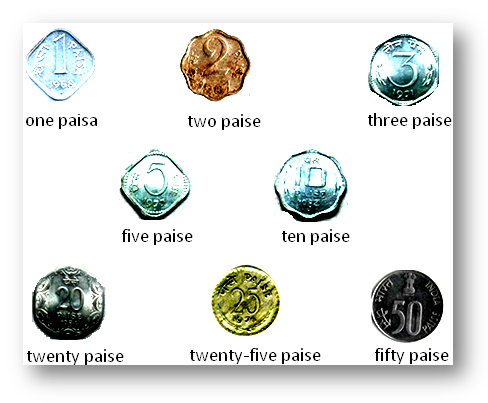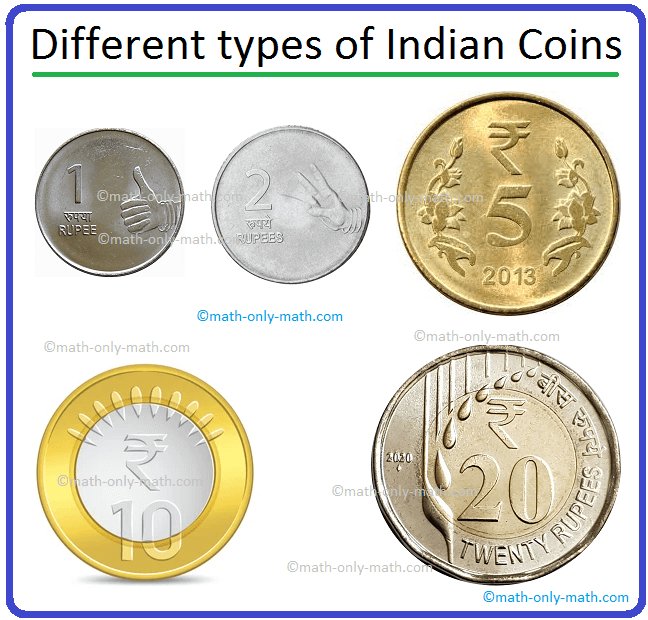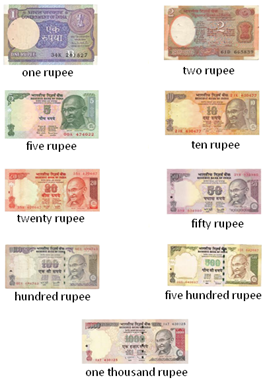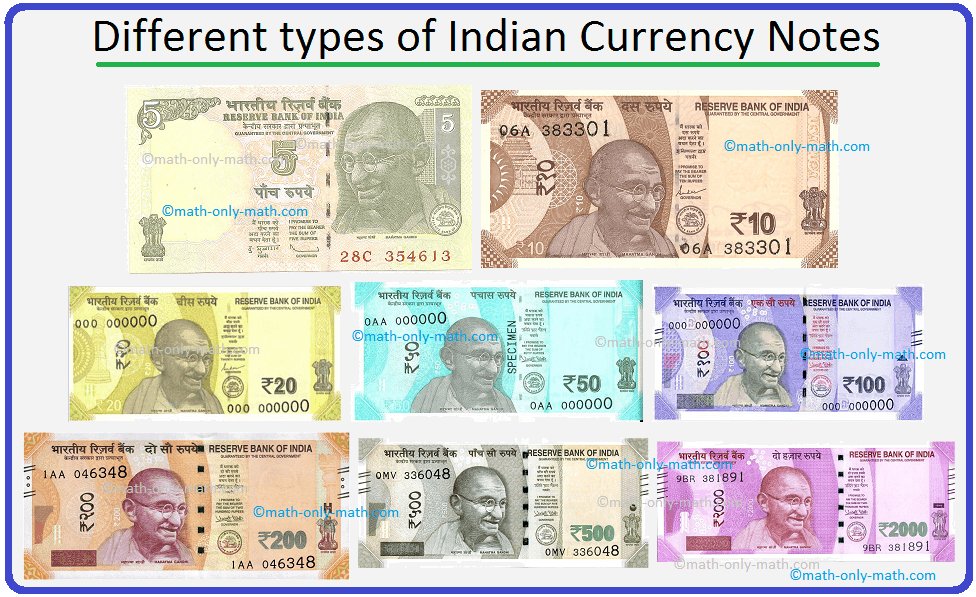Subscribe to our ▶️ YouTube channel 🔴 for the latest videos, updates, and tips.
Indian Money
In India we use rupees and paise as money. In our daily life we purchase the required things from a shop and pay money to the shopkeeper for the purchased thing. We use money to pay for things that we buy. In India, money is used both in the form of coins and currency notes.
We use rupees and paise as money. Money comes in notes and coins of different values. Notes and coins come in different size, shape and colour for making it easier to identify them.
Given below are pictures of some notes and coins that we use as money to buy things.
Money is available in two forms (i) Coins and (ii) Currency notes.
Coins: The shapes and size of coins are changed from time to time. Nowadays the coins of one paise to twenty paise are not in use. The coins of 50-paise, 1-rupee, 2-rupee and 5-rupee denominations are mostly in use.
Different types of Indian Coins with different shapes and sizes:
Some coins which are not in use:
Some coins which are in use:
Currency Notes: The shapes, sizes and designs of these currency notes are changed from time to time. In case of 1-rupee, 2-rupee and 5-rupee denominations, both coins as well as notes are used. One rupee, two rupee notes are rarely available now. Five rupee, ten rupee, twenty rupee, fifty rupee notes are available now.
Different types of Indian Currency notes:
Some notes which are in use:
Nowadays mostly coins of one rupee, two rupee and five rupee are in use.
LET US RECALL
We already know that in our country, money is counted in rupees (₹) and paise (p), and is available as coins and notes.
It was announced on 8th November, 2016 that the 500 and 1000 currency notes were being banned from the same midnight. New currency notes of 500 and 2000 were launched instead.
Related Concept
● Writing Money in Words and Figure
Didn't find what you were looking for? Or want to know more information about Math Only Math. Use this Google Search to find what you need.






New! Comments
Have your say about what you just read! Leave me a comment in the box below. Ask a Question or Answer a Question.